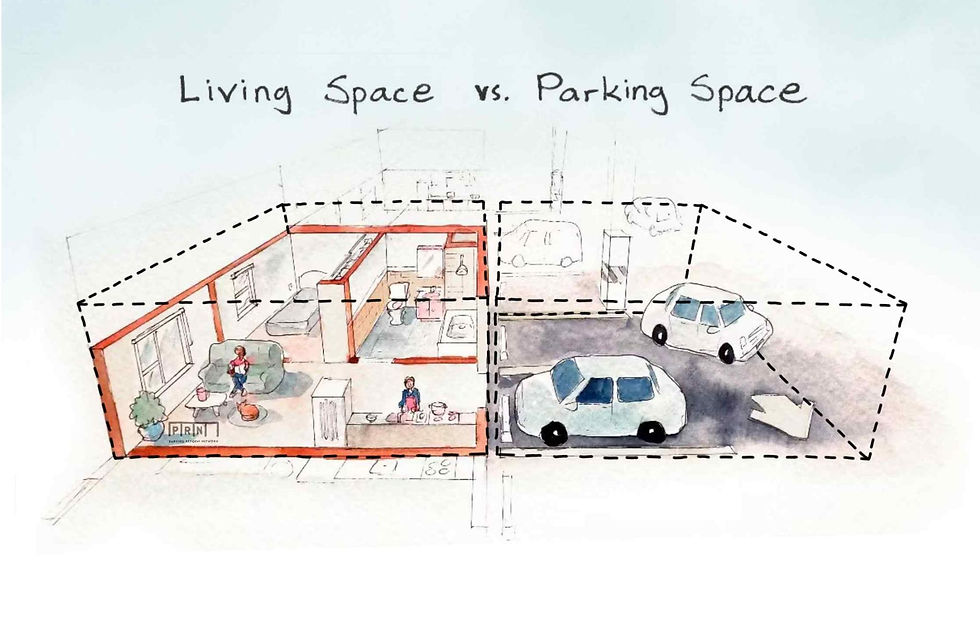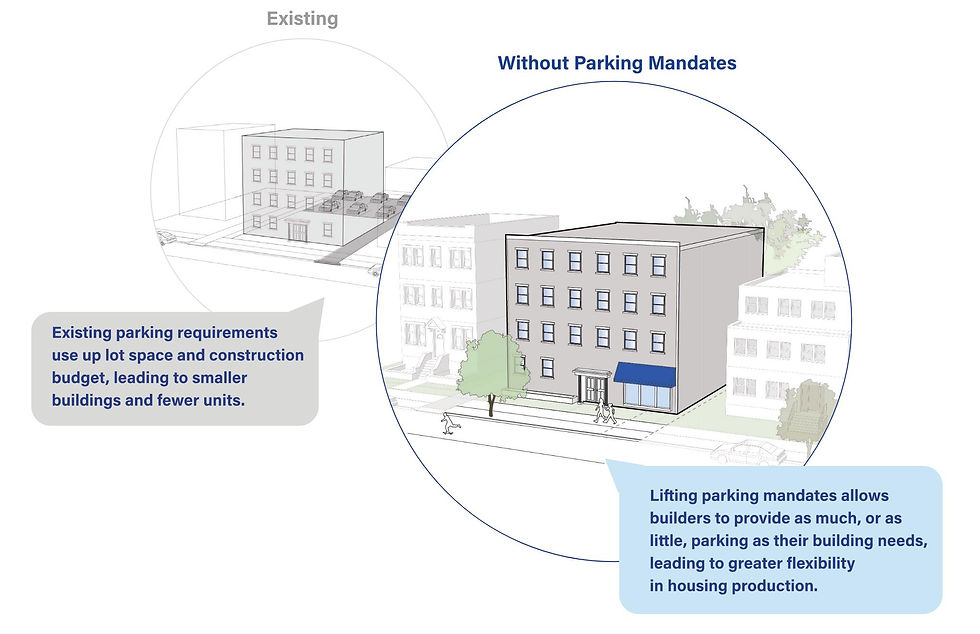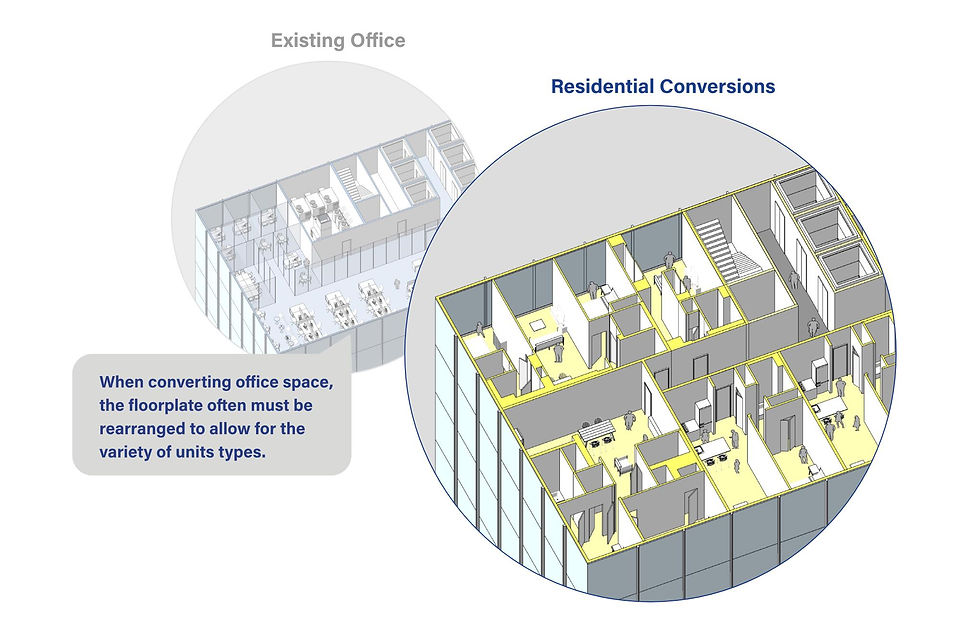City of Yes: Parking
- MZA
- Apr 11
- 1 min read
Updated: May 28
Advantages of the New Implementation:
Increased Housing Availability: By reducing or eliminating parking mandates, developers can allocate more space for residential units, thereby increasing the overall housing supply.
Cost Savings: The removal or reduction of parking requirements helps lower construction costs, which can lead to more affordable housing options for residents.
Promotion of Sustainable Transportation: With fewer parking spaces required, the initiative encourages the use of public transportation, cycling, and walking, supporting environmentally sustainable lifestyles.
Flexibility in Development: The changes allow for greater design flexibility, giving developers more freedom to create innovative housing solutions that better meet community needs.

Overview of Parking Requirements by Transit Zones:
Greater Transit Zone:
·Inner Transit Zone: Includes areas with excellent access to transit, such as the Manhattan Core (south of 96th Street) and Long Island City. In these areas, residential parking requirements are eliminated entirely for new developments.
·Outer Transit Zone: Comprises areas with good access to transit but longer commute times and greater reliance on cars. In these zones, parking requirements are significantly reduced for multifamily residential developments.
Beyond the Greater Transit Zone:
In areas outside the Greater Transit Zone, parking requirements are generally equivalent to those before the City of Yes initiative. However, certain housing types, such as affordable housing, accessory dwelling units (ADUs), houses of worship, and qualifying developments under 75 units, are exempt from parking requirements.
These changes aim to streamline the housing development process, reduce costs, and promote sustainable urban living,




Comments